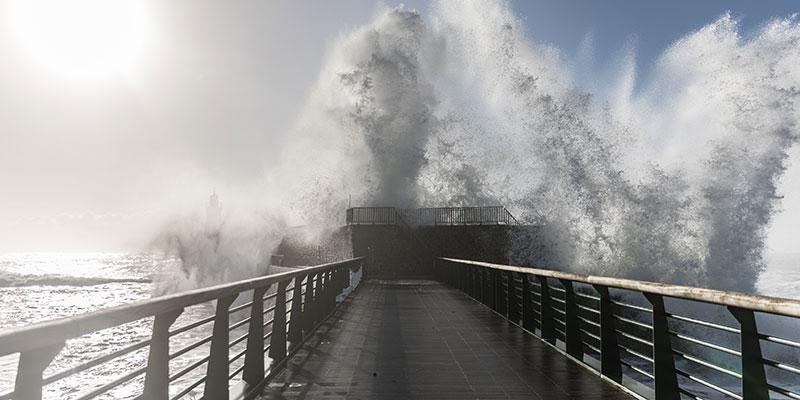Track 2: Coastal Environmental Engineering
Track 2: Coastal Environmental Engineering
MSc in Coastal and Marine Engineering and Management (CoMEM+)
Track 2: Coastal Environmental Engineering

The basis of the Coastal Environment and Engineering track is the consideration of the hard and soft classical engineering, giving an overview of what ports and coasts represent, as well as providing a comprehensive basis, both theoretical-conceptual and practical. This allows a further specialization in any of the specific aspects of this field, with a special focus on nature-based solutions. The physical and mechanical concepts for the marine environment and coastal structures design are introduced and are the basis for the advanced education and training the interaction between maritime structures and their environment and the anthropic impact on the development of the coastal domain.
Since there are a number of different but complementary coastal engineering problems at the four study sites included in this track (Trondheim, France, Genova and Barcelona), the students will receive the classical view of coastal engineering problems plus an in-depth view of problems comprising Fjords, micro tidal conditions and torrential weather environments. Therefore, the required mobility will play a key role in this multidimensional education and will allow a natural enrichment of their capacity to define and solve coastal problems.
Learning outcomes
Learning outcomes
General competences
General competences
After completing Track 2, the students will be able to:
- Develop knowledge and understanding of the coastal environment at an advanced level, applying classic (hard and soft) coastal engineering complemented with building with nature concepts, with ability to analyse, evaluate, assess and synthesis of data and information from different sources with contemporary techniques and technologies.
- Handle engineering problems dealing with waves, currents, their interactions, their effects on the coastline and man-made interventions, spanning from short (storms) to decadal scales, to incorporate the climate change dimension.
- Propose creative and innovative solutions by themselves or as a work group for current and future problems by enhancing their own interpersonal understanding, work as a team and oral and written communication skills.
- Take a leadership role in the community, exerting awareness of ethical, cultural and social issues within a global context in the exercise of their professional skills and responsibilities.
Knowledge
Knowledge
After completing Track 2, the students will have knowledge of:
- Coastal hydrodynamics and processes.
- Short-term and long-term wave climate.
- Sediment transport and morphology.
- Tidal currents.
- Coastal and oceanographic numerical modelling.
- Physical models for coastal processes, structures and their interactions.
- Coastal vulnerability within a sustainable framework.
- Field campaigns and data treatment to evaluate problematic situations and plan/design solutions.
- Developing beach management strategies for real-world coastal systems.
- The basis behind climate change and its effect on the coast.
- How to cooperate with administrations and private companies.
Skills
Skills
After completing Track 2, the students will be able to:
- Design coastal interventions.
- Understand and predict the impacts of coastal interventions.
- Offer alternatives to hard coastal engineering.
- Analyse and interpret collected field data in order to understand the physical drivers at short, mid and long-time or climatic scales.
- Apply state-of-the-art wave, flow and morphological models.
- Compute the risk, vulnerability and hazard analysis including the decadal (climatic) scale.
